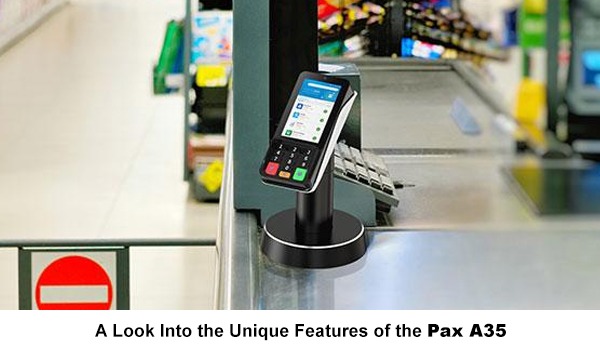
Understanding the Essentials of Daily Fund Reconciliation
Definition and Importance of Daily Fund Reconciliation
Daily fund reconciliation is a crucial process for any organization that deals with financial transactions. It involves comparing and verifying the recorded balances against the actual financial transactions to ensure accuracy and identify discrepancies. This process is essential for maintaining the integrity of financial data and preventing fraudulent activities.
Key Components in the Fund Reconciliation Process
The fund reconciliation process consists of various components that work together to ensure accurate financial reporting. These components include:
- Bank Statements: Comparing bank statements with internal financial records helps identify any discrepancies or errors, such as unauthorized transactions or missing deposits.
- General Ledger: Analyzing the general ledger entries allows for identifying any incorrect postings, missing transactions, or journal entry errors that may affect the overall financial accuracy.
- Cash Registers: Verifying cash register totals with recorded sales and receipts ensures that all cash transactions are accurately accounted for, reducing the risk of errors or discrepancies.
Common Challenges in Implementing Daily Fund Reconciliation
Implementing a daily fund reconciliation process can be challenging due to various factors.
- Manual Processes: Relying on manual processes increases the risk of errors and consumes significant time and resources. Manual reconciliation can be labor-intensive, prone to human error, and may not scale well with growing transaction volumes.
- Lack of Integration: Inefficient integration of financial systems and data sources can lead to discrepancies and delays in reconciliation. Without a centralized and automated system, the reconciliation process becomes fragmented and less accurate.
- Lack of Training: Insufficient training and knowledge about the reconciliation process can result in incorrect procedures, misinterpretation of financial data, and increased errors. Proper education and training for staff members involved in reconciliation are crucial for ensuring accuracy.
Leveraging Technology in Fund Reconciliation
Integration of Automation in Reconciliation Processes
Automation plays a vital role in simplifying and streamlining the fund reconciliation process. By leveraging technology solutions, organizations can increase efficiency and accuracy. Automated reconciliation software can match transactions, identify discrepancies, and reconcile accounts in a fraction of the time it takes for manual reconciliation.
Utilizing Software for Fund Reconciliation: Pros and Cons
When considering the use of software for fund reconciliation, organizations must weigh the pros and cons. Some advantages of software utilization include:
- Increased Accuracy: Advanced algorithms and cross-validation techniques minimize the risk of errors. The software can identify discrepancies and errors that may go unnoticed in manual processes.
- Time Savings: Automation reduces the time required for reconciliation, enabling staff members to focus on other crucial tasks, such as analysis and decision-making.
- Scalability: Software solutions can handle large transaction volumes, allowing organizations to scale their operations without compromising accuracy.
There are also some potential to consider:
- Cost: Implementing automated software may require upfront investment and ongoing maintenance costs. Organizations should assess the cost-benefit ratio before making a decision.
- Learning Curve: Staff members may need the training to adapt to new software. This initial learning curve might delay the realization of the benefits of automation.
Importance of Regular System Updates and IT Infrastructure Health Checks
To ensure the effectiveness of the fund reconciliation process, it is essential to perform regular system updates and evaluate the health of the IT infrastructure. Outdated software or hardware can introduce vulnerabilities and hinder the accuracy of reconciliation. Regular updates and health checks help ensure a robust and secure reconciliation environment.
Implementing Efficient Reconciliation Procedures
Structuring a Robust Reconciliation Workflow
To simplify the daily fund reconciliation process, organizations should establish a robust reconciliation workflow. This workflow should clearly define the roles and responsibilities of each team member involved in the reconciliation process. By creating a structured workflow, organizations can minimize confusion, improve efficiency, and reduce the likelihood of errors.
Benefits of a Standardized Reconciliation Procedure
Standardizing the reconciliation procedure brings numerous benefits. It provides a clear roadmap for staff members, reduces variations in the reconciliation process, and ensures consistency. A standardized procedure also simplifies training for new employees and makes it easier to identify and address any gaps or issues in the reconciliation workflow.
Balancing Efficiency and Rigor in the Reconciliation Procedure
While efficiency is crucial in streamlining the reconciliation process, it's equally important not to sacrifice rigor. Striking the right balance ensures accurate reconciliation without unnecessary delays. Organizations should focus on leveraging technology, implementing automation where appropriate, and optimizing the workflow to achieve efficiency without compromising accuracy.
Preventing and Correcting Errors in Reconciliation
Common Errors in Reconciliation and How to Avoid Them
Even with efficient processes, errors may still occur during fund reconciliation. Some common errors include data entry mistakes, incorrect postings, and missed transactions. To avoid these errors, organizations should focus on:
- Double-Checking: Encouraging staff members to double-check their work before finalizing the reconciliation helps catch any errors before they impact the accuracy.
- Reconciliation Audits: Periodic reconciliation audits, performed by separate individuals or teams, can identify errors or discrepancies that may have been missed during the reconciliation process.
Systematic Error Detection and Correction Methods
Implementing systematic error detection and correction methods helps organizations catch errors early and correct them promptly. These methods include:
- Reconciliation Reports: Regularly generating reconciliation reports enables quick identification of errors or discrepancies. These reports serve as a reference for rectifying errors and ensuring accurate financial reporting.
- Root Cause Analysis: Conducting root cause analysis for recurring errors helps identify the underlying issues or process gaps causing the errors. By addressing these root causes, organizations can mitigate the risk of future errors.
Creating a Proactive Approach to Error Prevention
A proactive approach to error prevention is key to simplifying the daily fund reconciliation process. Organizations should focus on:
- Continuous Improvement: Encouraging staff members to provide feedback and insights on the reconciliation process can help identify areas for improvement, prevent errors, and enhance overall efficiency.
- Regular Review: Conducting regular reviews of reconciliation procedures helps identify potential risks or gaps that may lead to errors. By addressing these gaps, organizations can implement preventive measures and reduce the likelihood of errors.
Conclusion
In conclusion, simplifying the daily fund reconciliation process is essential for organizations to ensure accurate financial reporting, identify discrepancies, and prevent fraudulent activities. By leveraging technology, structuring efficient workflows, providing staff training, and implementing proactive error prevention measures, organizations can enhance the reconciliation process and achieve optimal outcomes.









